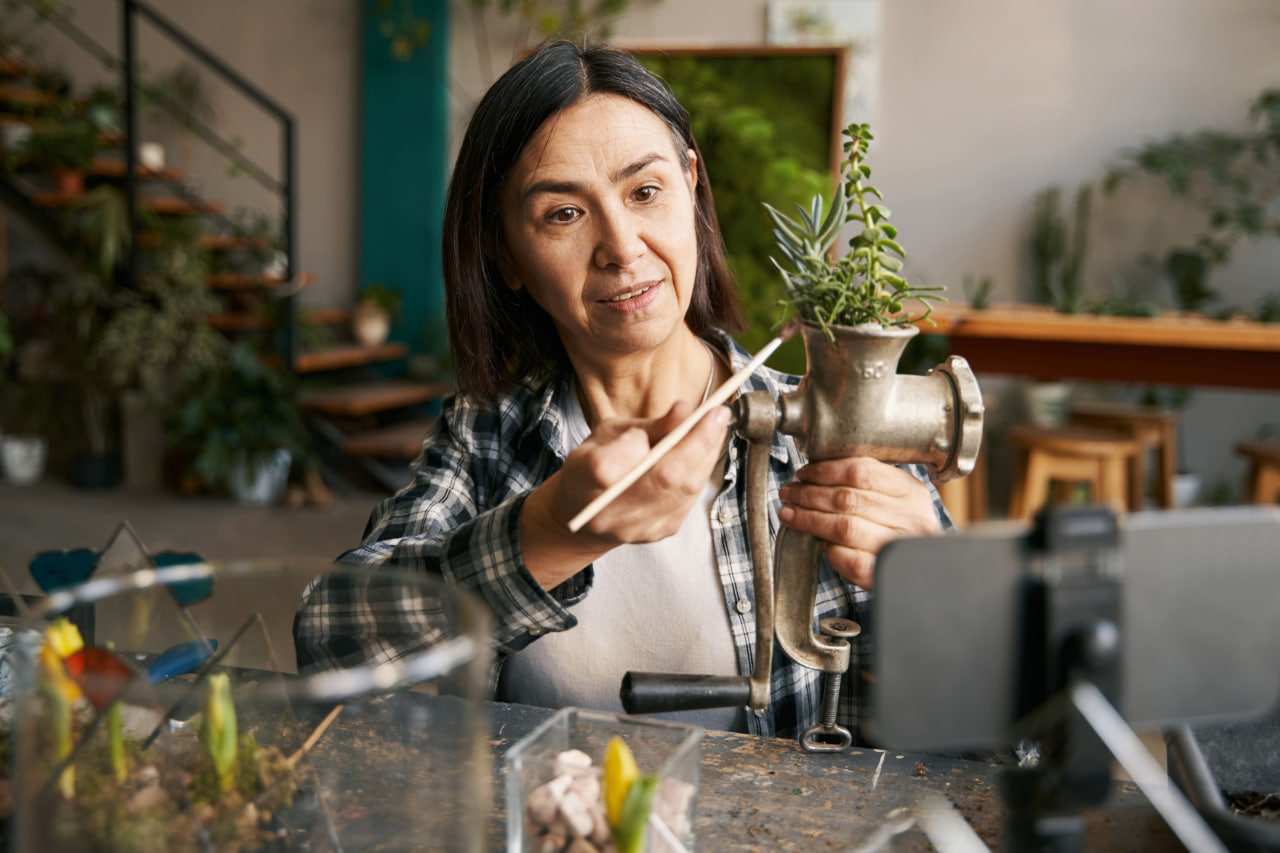As with any art form, floristry trends evolve over time, influenced by cultural shifts, seasonal preferences, and even technology. If you’re a beginner or aspiring florist, it’s important to stay updated on the latest trends to keep your designs fresh and relevant. Here’s a look at what’s currently in and what’s on its way out in the world of floral design.
In: Eco-Friendly Floral Designs
Sustainability is no longer just a buzzword in the floral industry; it’s becoming a way of life for many designers. Eco-conscious floristry has taken the spotlight, as more people are becoming aware of the environmental impact of floral production and waste. Designers are now choosing locally grown flowers, minimizing plastic use in packaging, and using biodegradable materials for wrapping and styling.
One popular trend is “zero-waste” floral arrangements, where florists use every part of the plant. This includes using flowers, leaves, and even stems for smaller designs or composting leftover material. Additionally, many florists are opting for reusable or sustainable containers, such as ceramic vases or vintage pots, instead of disposable options.
Out: Excessive Use of Plastic
For years, plastic floral wraps and foam were the go-to materials for creating structured arrangements. However, as consumers and florists alike have become more conscious of plastic waste, these materials are quickly falling out of favor. Floral foam, in particular, has received backlash for its environmental impact, as it doesn’t biodegrade and contributes to landfill waste.
As an alternative, florists are now focusing on more sustainable options like reusable foam-free mechanics, such as chicken wire or natural twine, to hold flowers in place. By embracing eco-friendly alternatives, you not only create beautiful designs but also contribute to a more sustainable future for the floral industry.
In: Wild and Loose Arrangements
Gone are the days of perfectly symmetrical, tightly arranged bouquets. The latest trend in floral design leans toward more natural, wild, and free-flowing arrangements. This style mimics the randomness and beauty of wildflowers growing in nature. Think of cascading bouquets with a mix of textures, shapes, and heights, and centerpieces with a loose, untamed feel.
Loose arrangements allow the flowers to express their natural beauty, making each piece unique. Designers are focusing on incorporating a variety of flowers, herbs, and foliage, blending together in a more relaxed, almost “garden-inspired” style. This trend is perfect for rustic or bohemian weddings, intimate events, or even as everyday home décor.
Out: Overly Structured and Formal Designs
While classic, structured arrangements will always have a place, the formal, stiff floral designs of the past are on their way out. Floral designs with strict symmetry and precise lines are being replaced by more organic, asymmetrical pieces that celebrate natural beauty. People are moving away from the rigid, “perfect” look and embracing more spontaneous, casual creations that feel personal and welcoming.
By adopting a looser, more fluid approach to design, florists can showcase their creativity while connecting with their clients on a deeper, more authentic level. This trend emphasizes individuality and natural beauty, which resonates with modern sensibilities.
In: Floral Installations and Art Pieces
Floral installations have gained significant popularity in recent years, and they’re expected to continue trending. From grand wedding arches to artfully designed walls made entirely of flowers, florists are pushing the boundaries of traditional design. These installations allow designers to showcase their creativity on a larger scale, creating immersive experiences for their clients.
Whether it’s a breathtaking floral ceiling, a whimsical flower wall, or an elaborate arrangement at the entrance of an event, these installations are meant to awe and inspire. The use of flowers as living art continues to redefine what floral design can be, allowing florists to blend art, nature, and design in stunning ways.
Conclusion
The world of floral design is continuously evolving, with new trends emerging as people’s tastes and environmental concerns shift. By staying on top of these trends, you’ll not only enhance your skills as a florist but also create designs that resonate with your clients and reflect the ever-changing beauty of the floral world. Whether you’re focusing on sustainability, embracing wild and loose styles, or experimenting with large-scale floral installations, there’s no shortage of exciting directions to explore in this dynamic art form.

